Buena Vista Lagoon May
Sorry this post is a bit late. Last weekend was the bird count. We didn't see as many species as usual, since summer is coming. We never see as many birds in the summer as we do in the rest of the year.
There were several song sparrows around. Below is one of them sitting in a pine tree.
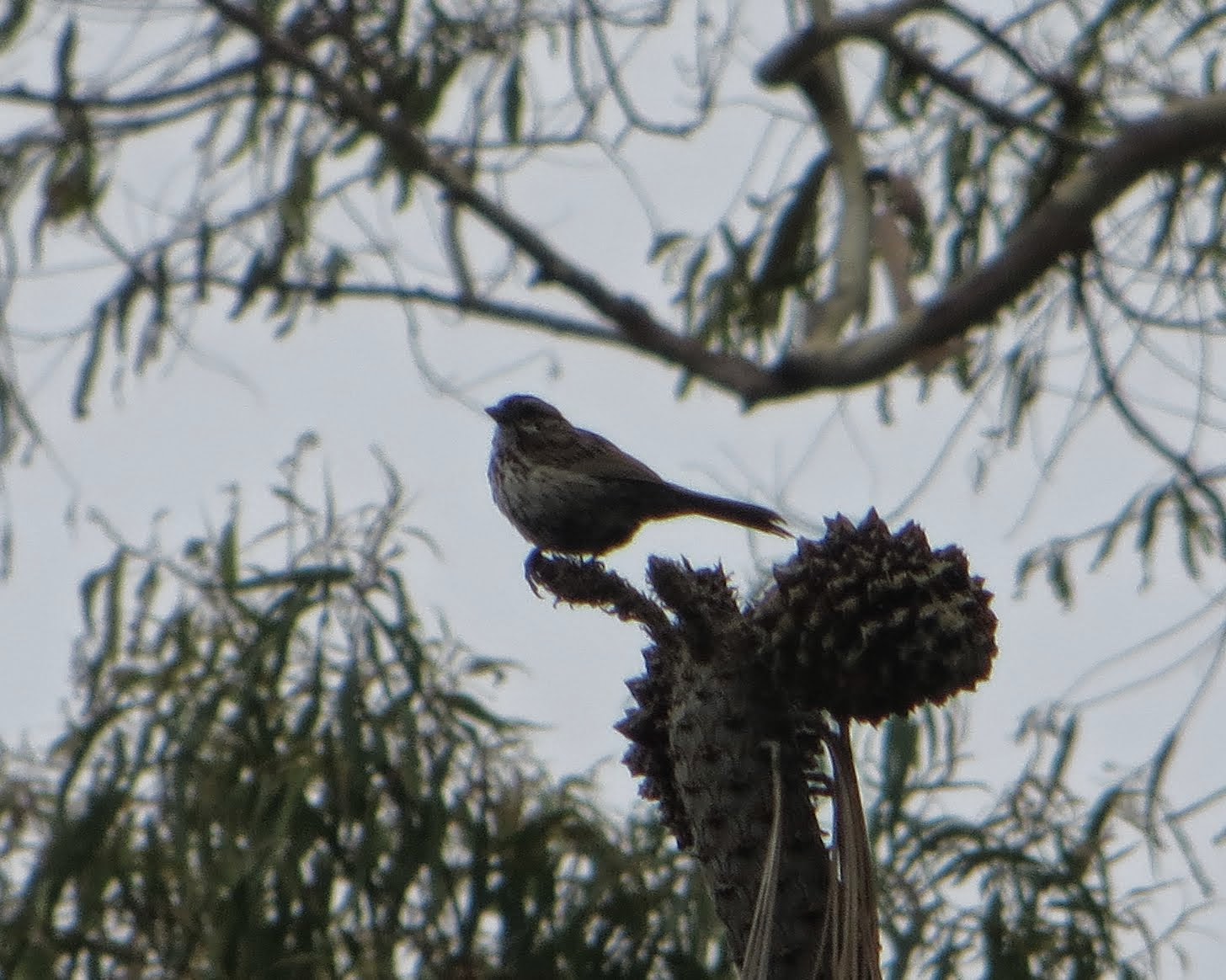 |
| Song Sparrow |
We did see egrets and herons, which was great, since we haven't been seeing very many recently. Below is a snowy egret walking beside the road.
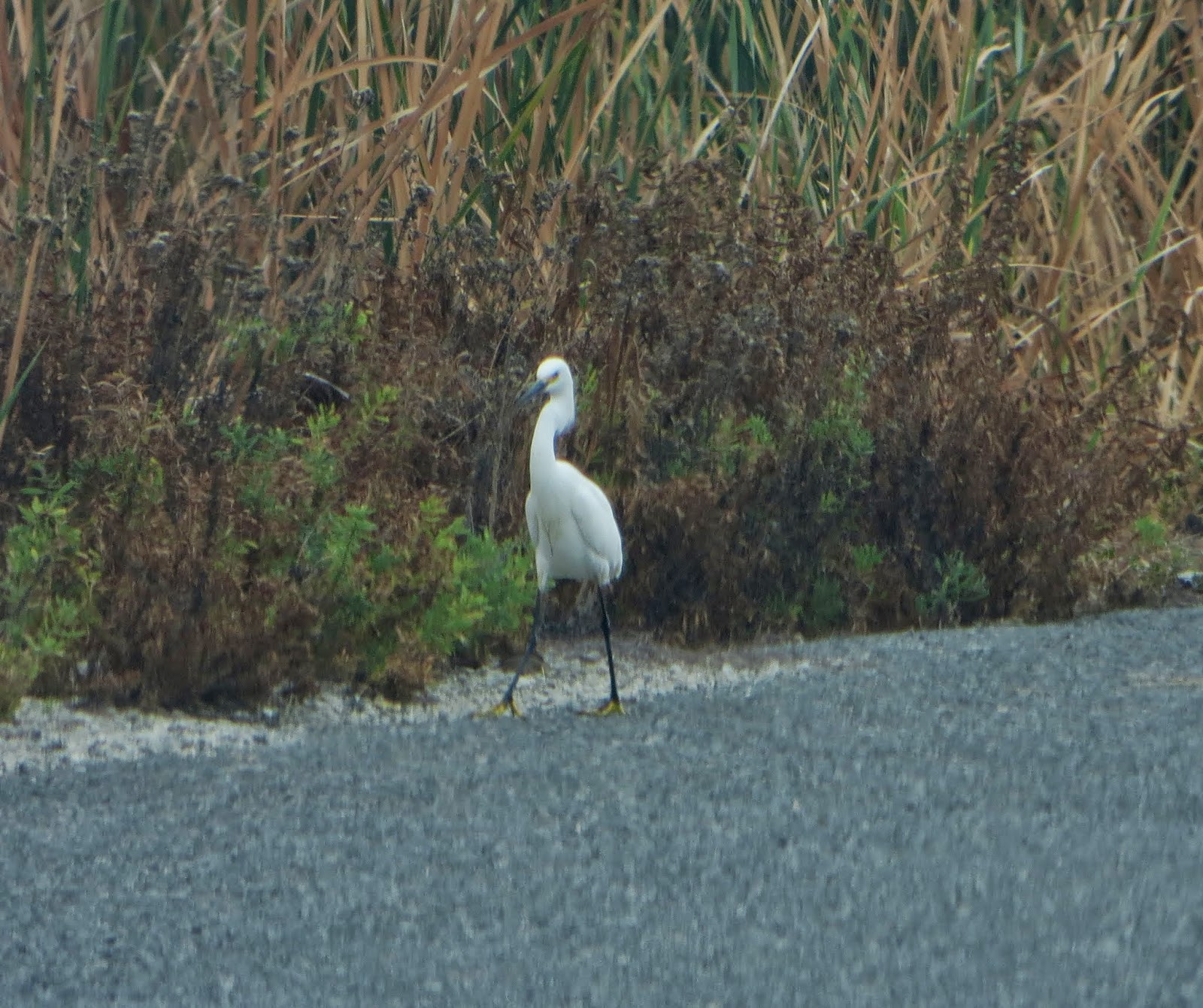 |
| Snowy Egret |
There were quite a few Caspian terns around and diving after fish. There were also some least terns around, though not as many. Below are three photos of a Caspian tern flying, diving, and flying away with a fish.
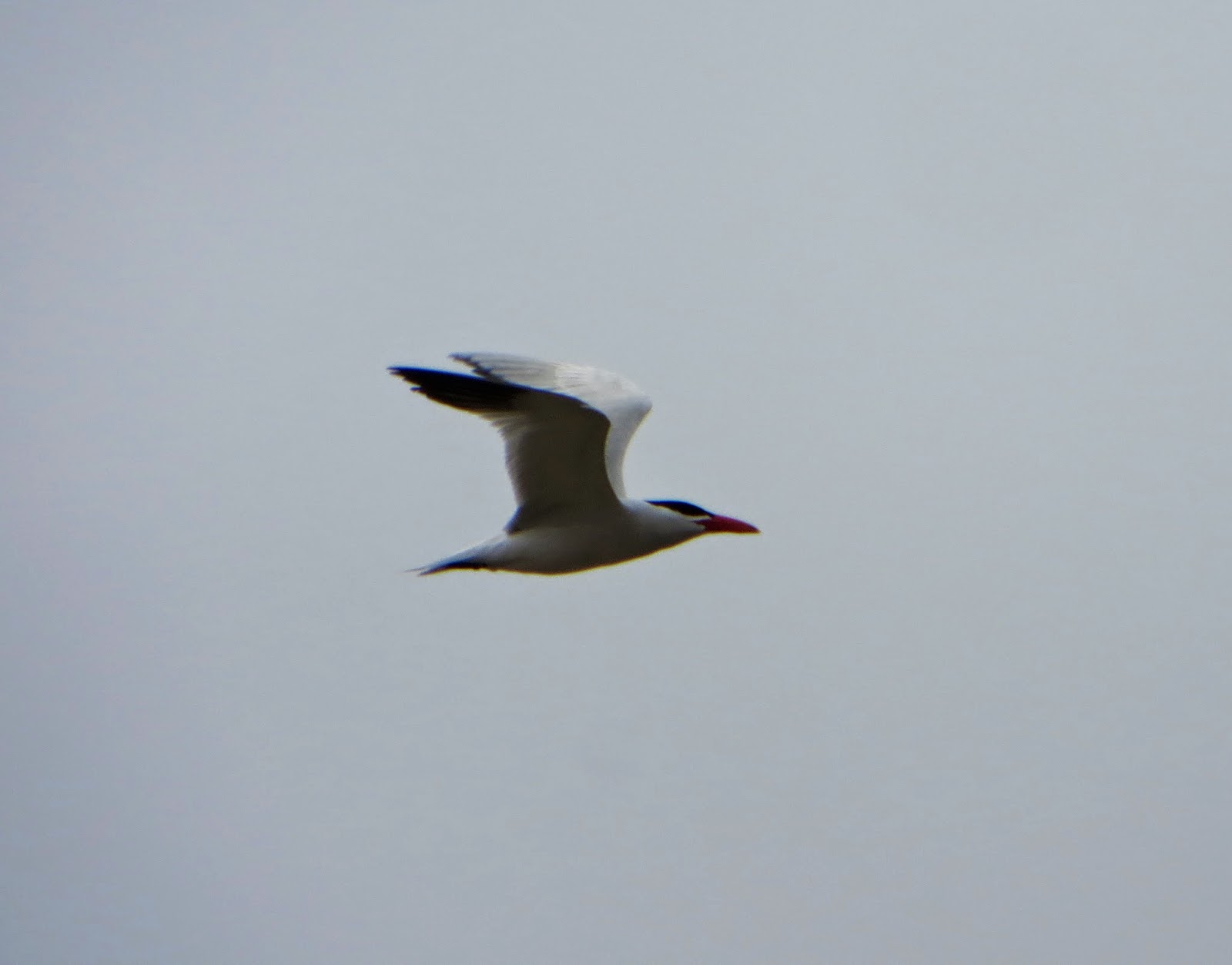 |
| Caspian Tern |
 |
| Caspian Tern |
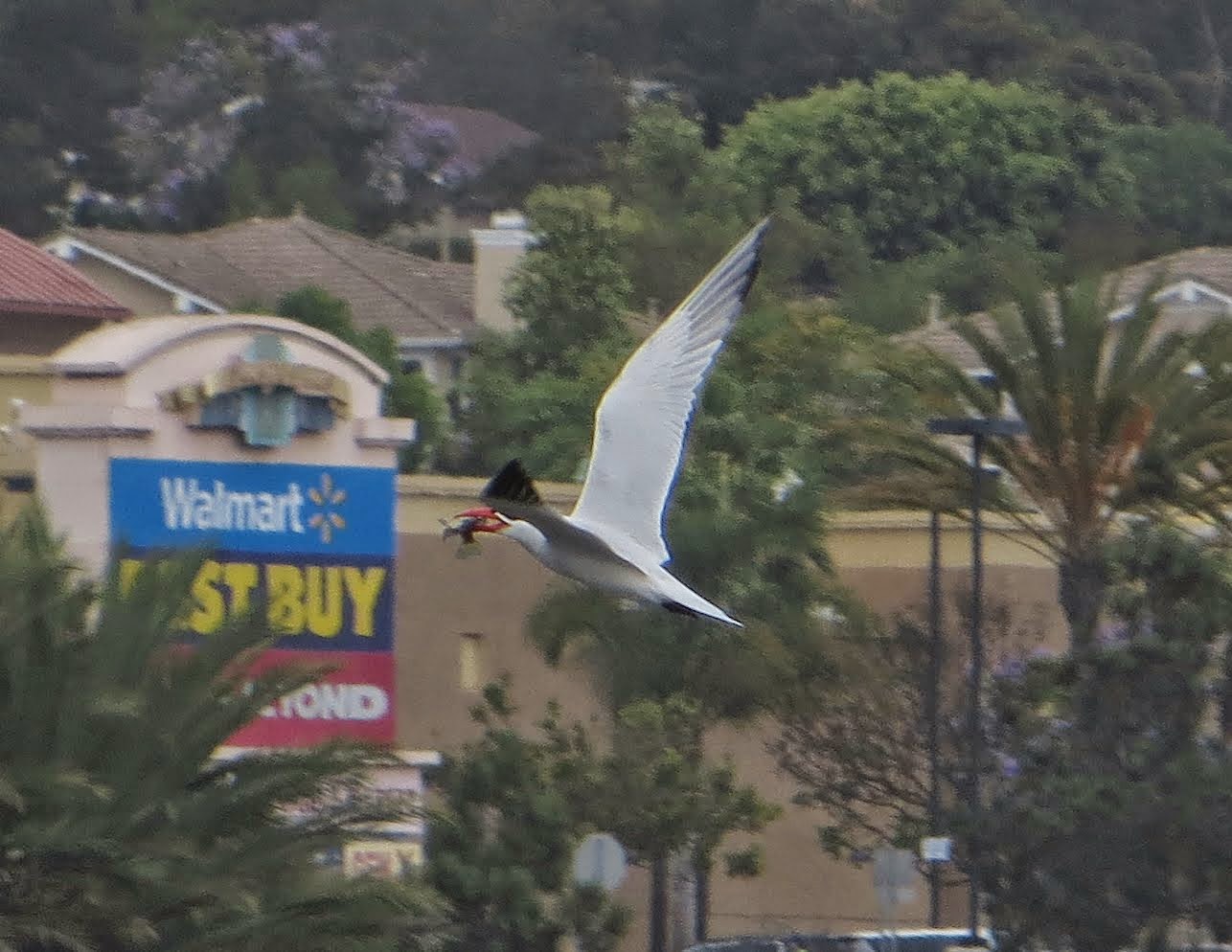 |
| Caspian Tern |
A great blue heron was sitting and preening itself in the reeds. Below is a photo of it.
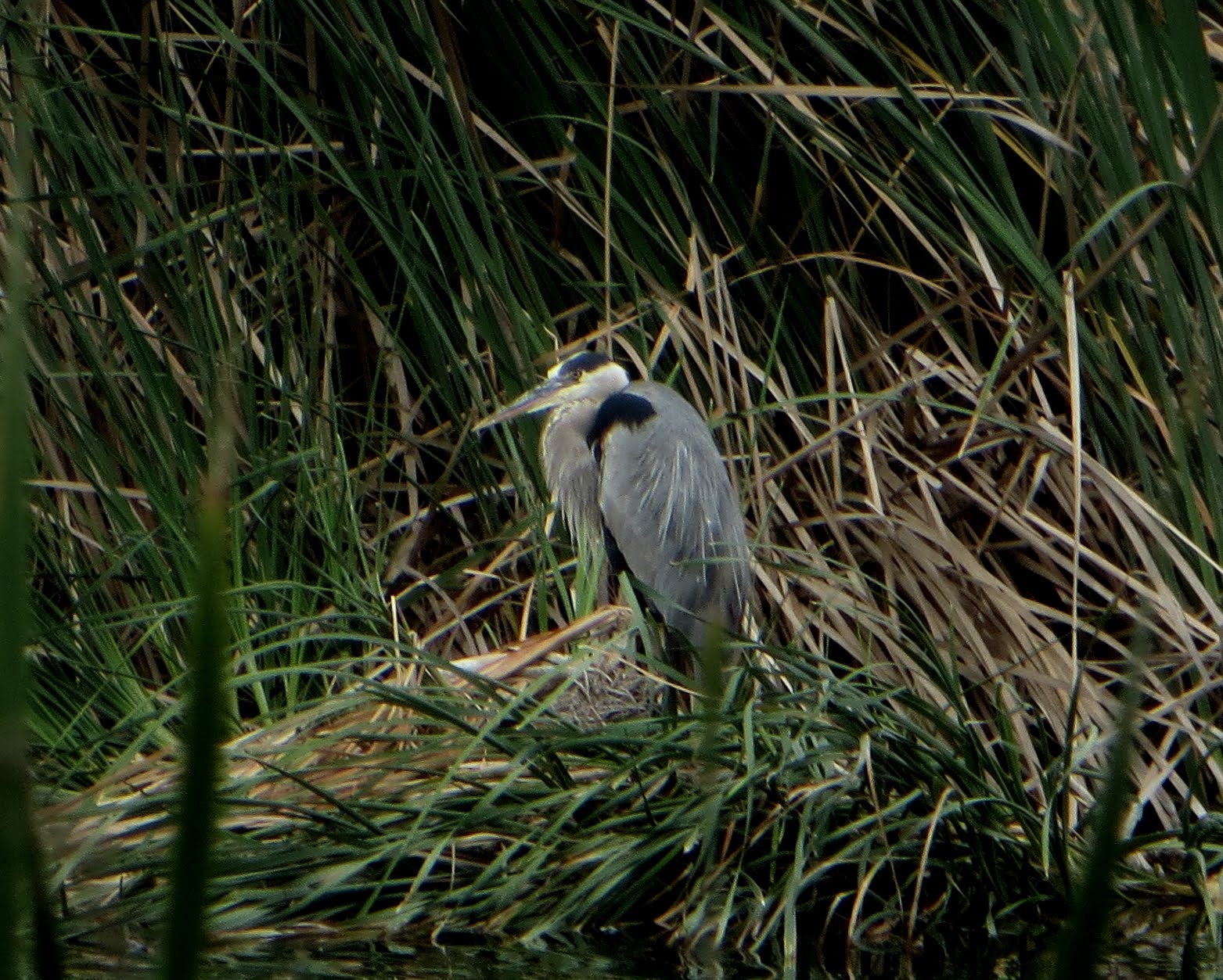 |
| Great Blue Heron |
We saw three brown-headed cowbirds, which we don't usually see. Brown-headed cowbirds are found in most of the central United States and Canada in the summer, the east and west coasts and northern Mexico year-round, and southern Mexico in the winter. Females are plain brown with a paler throat and light streaks on the chest. Males have iridescent black bodies and plain brown heads. Cowbirds are parasitic nesters, which means they lay their eggs in other birds' nests, sometimes pushing out the birds' eggs and nestlings in the process. Below is a photo of a male brown-headed cowbird.
 |
| Brown-headed Cowbird |
In Oceanside and Carlsbad, there is a small population of feral lilac-crowned parrots. We often see a few of them flying by and squawking. Below is a photo of a flock of four.
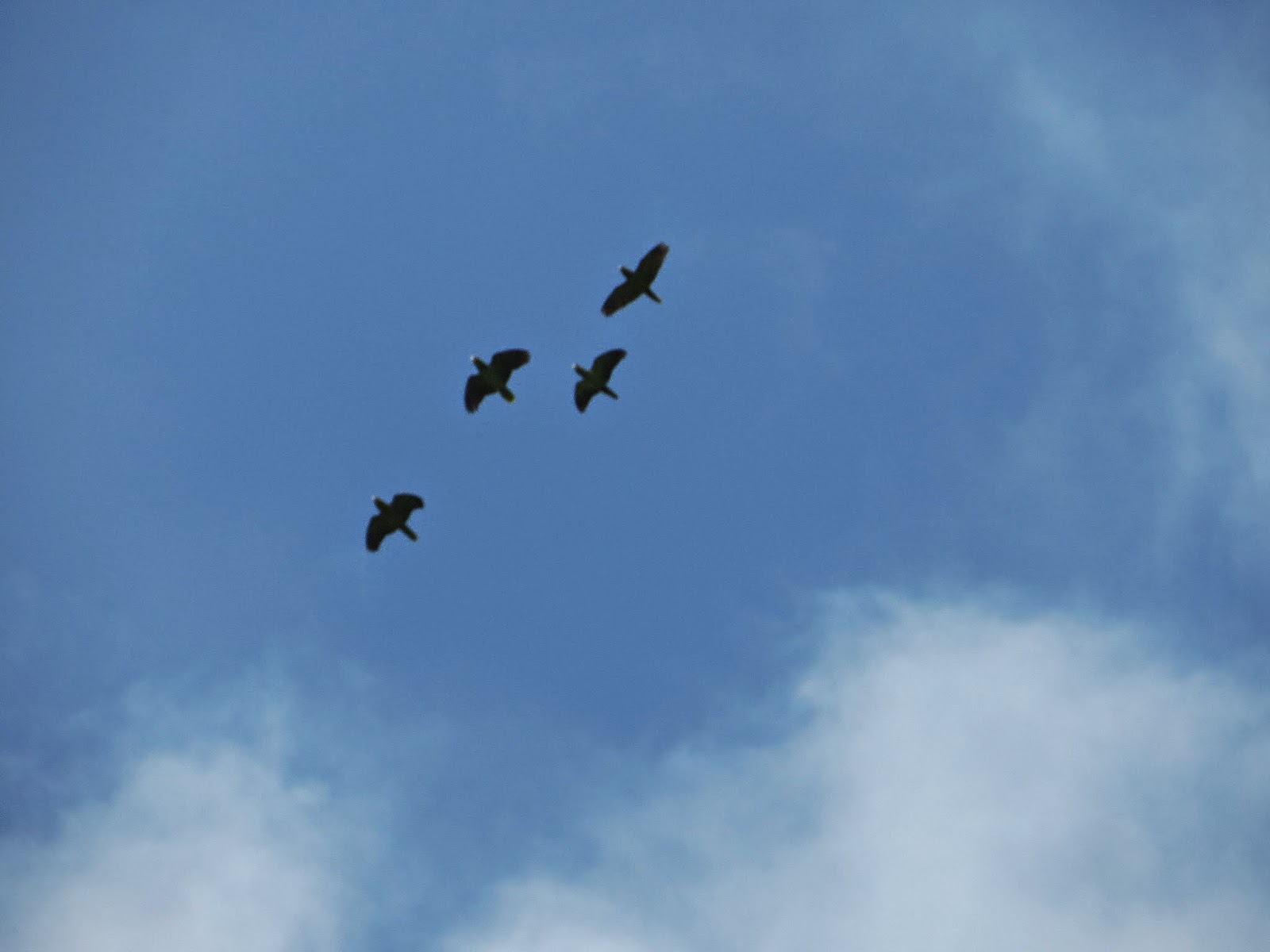 |
| Lilac-crowned Parrots |
Another non-native we saw was the red-eared slider. They are one of the turtles commonly found in pet stores. They are native to the southeastern United States. We found two rather large ones on a hillside. We caught them, and they will be sent to Texas, where they are native. It was rather interesting catching them, since they shoot a stream of urine as a defense against predators. Below are two photos of them. The first photo is of one of them hiding among some melon vines. The second is of them in a box, showing the red ear-patches.
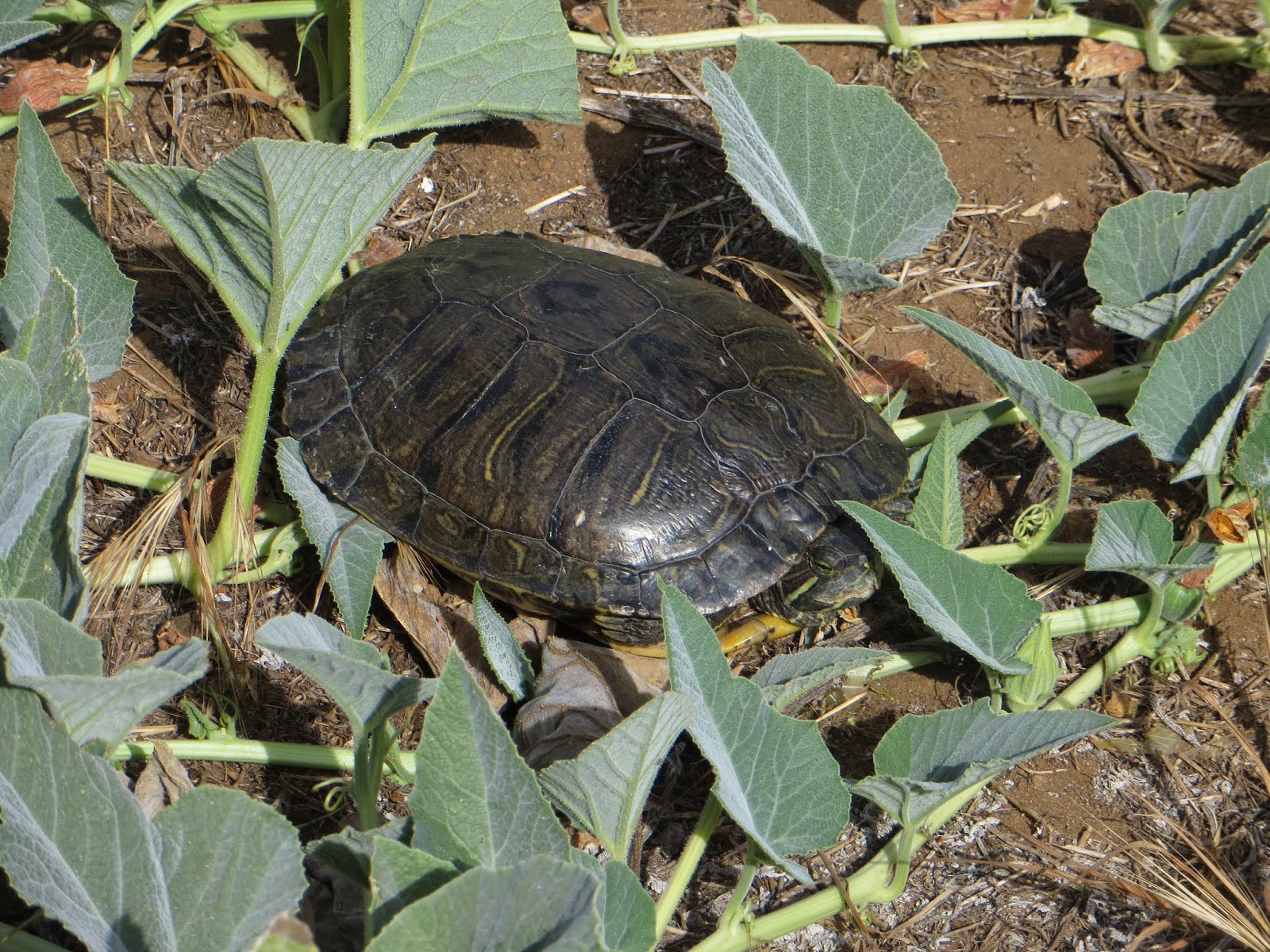 |
| Red-eared Slider |
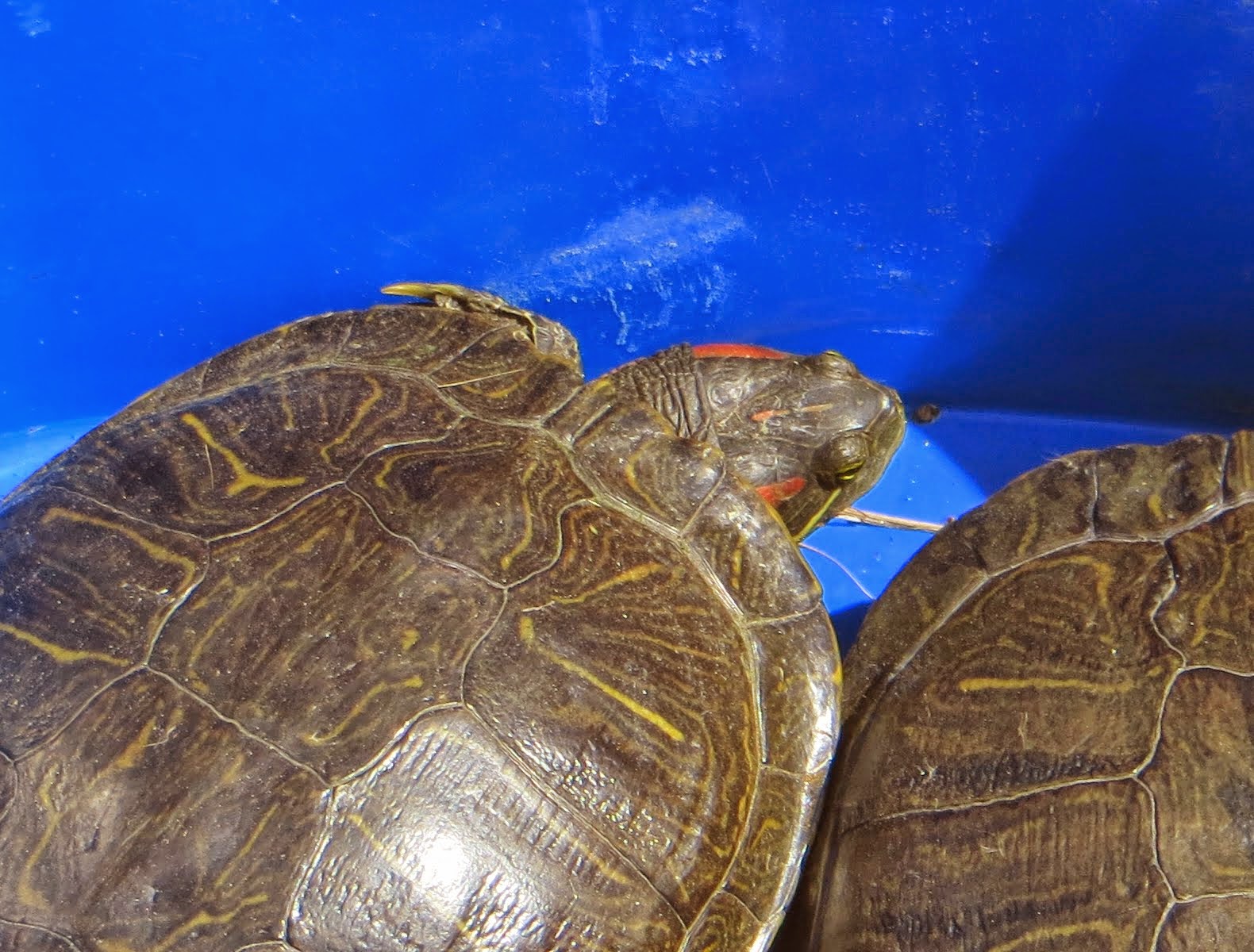 |
| Red-eared Sliders |
We don't usually see pied-billed grebes close up, but we did this time. It swam for a little while out in the open before diving into the water. Below is a photo of it (see the black ring around the bluish-gray bill).
 |
| Pied-billed Grebe |
It was nesting season for the mallards. There was a female with four little ducklings. They must have just hatched, because they were very tiny and fluffy. When they were startled, they would hurry down the hill, tumble into the water, and follow their mother. Below are four photos of the mother and her ducklings.
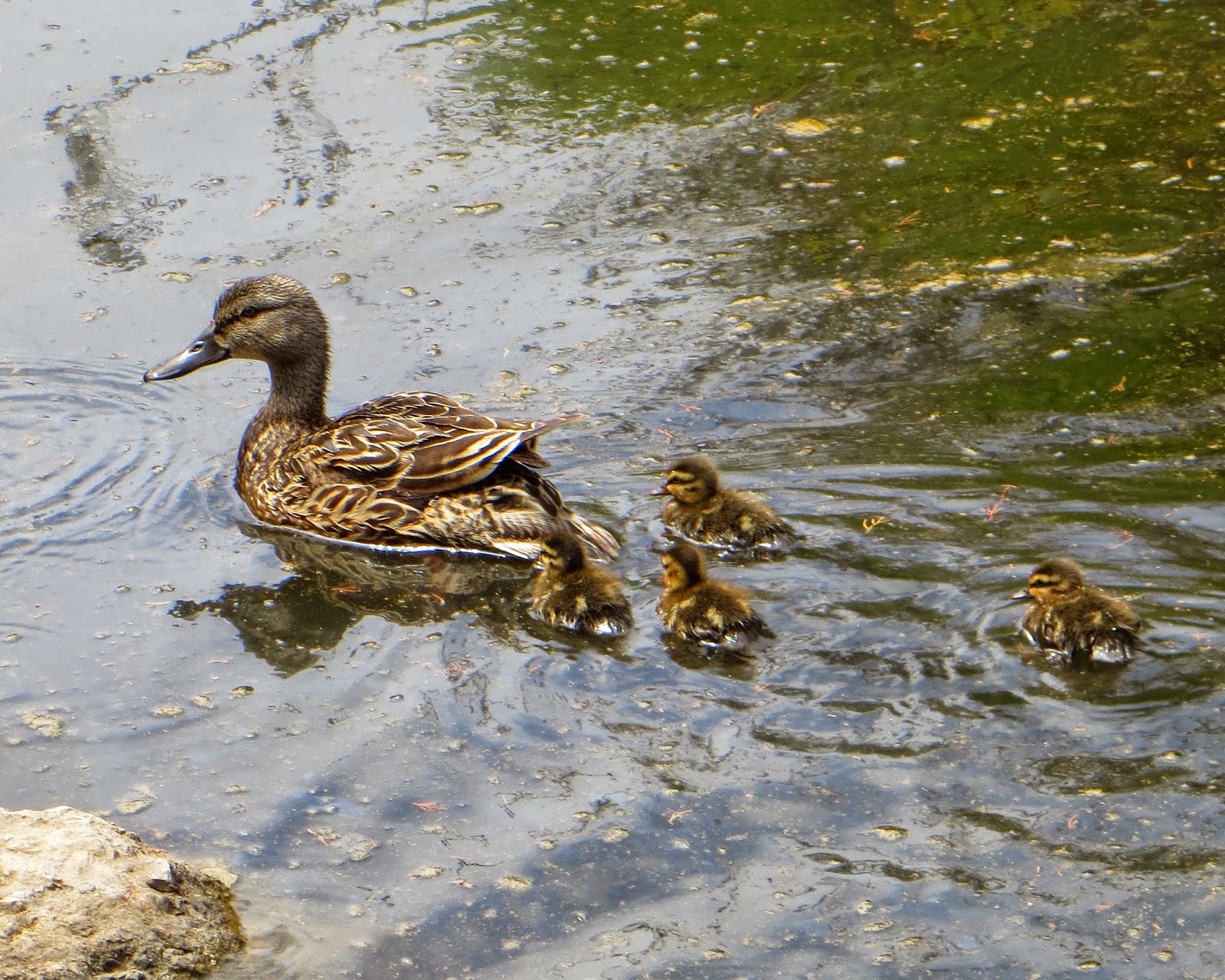 |
| Mallards |
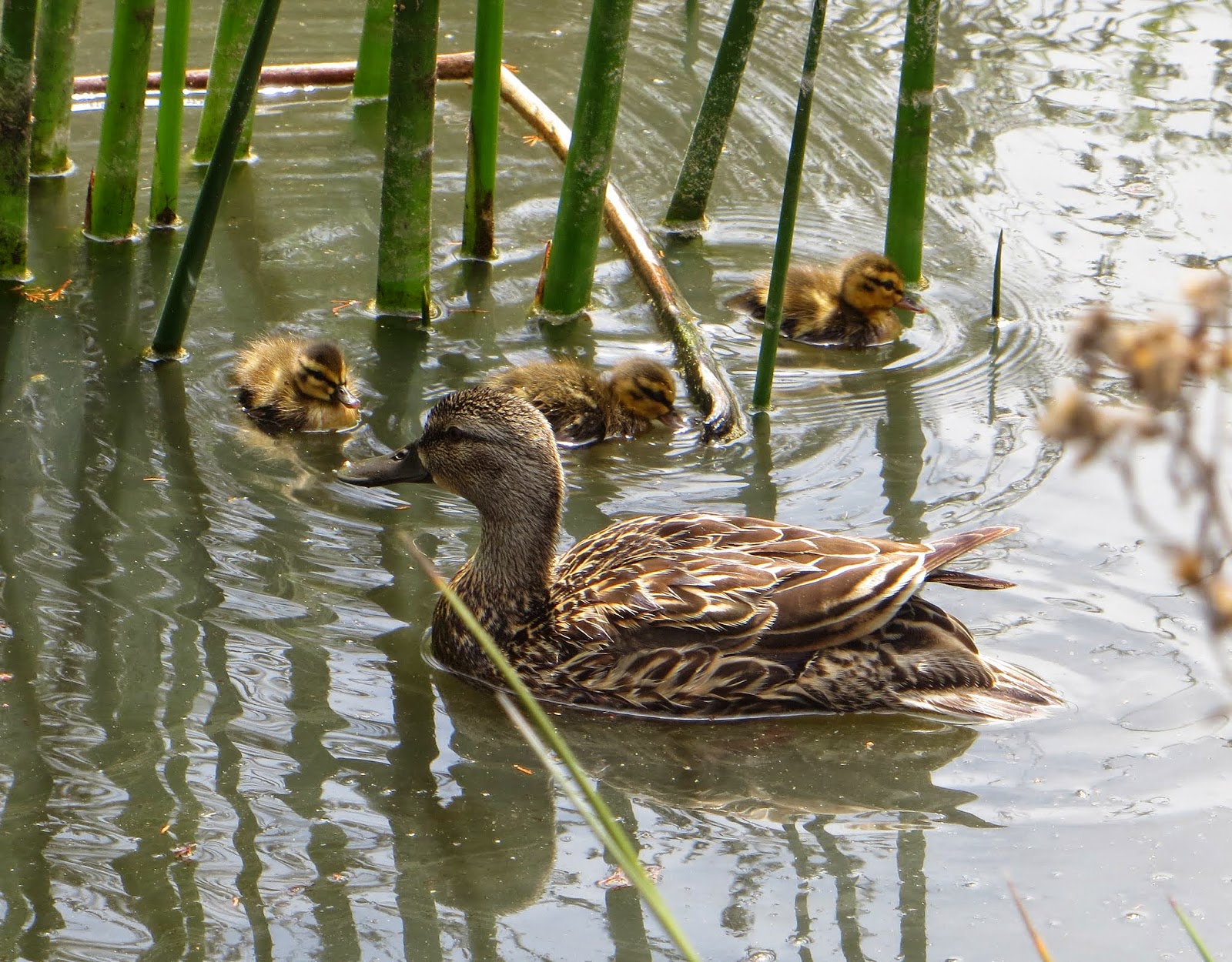 |
| Mallards |
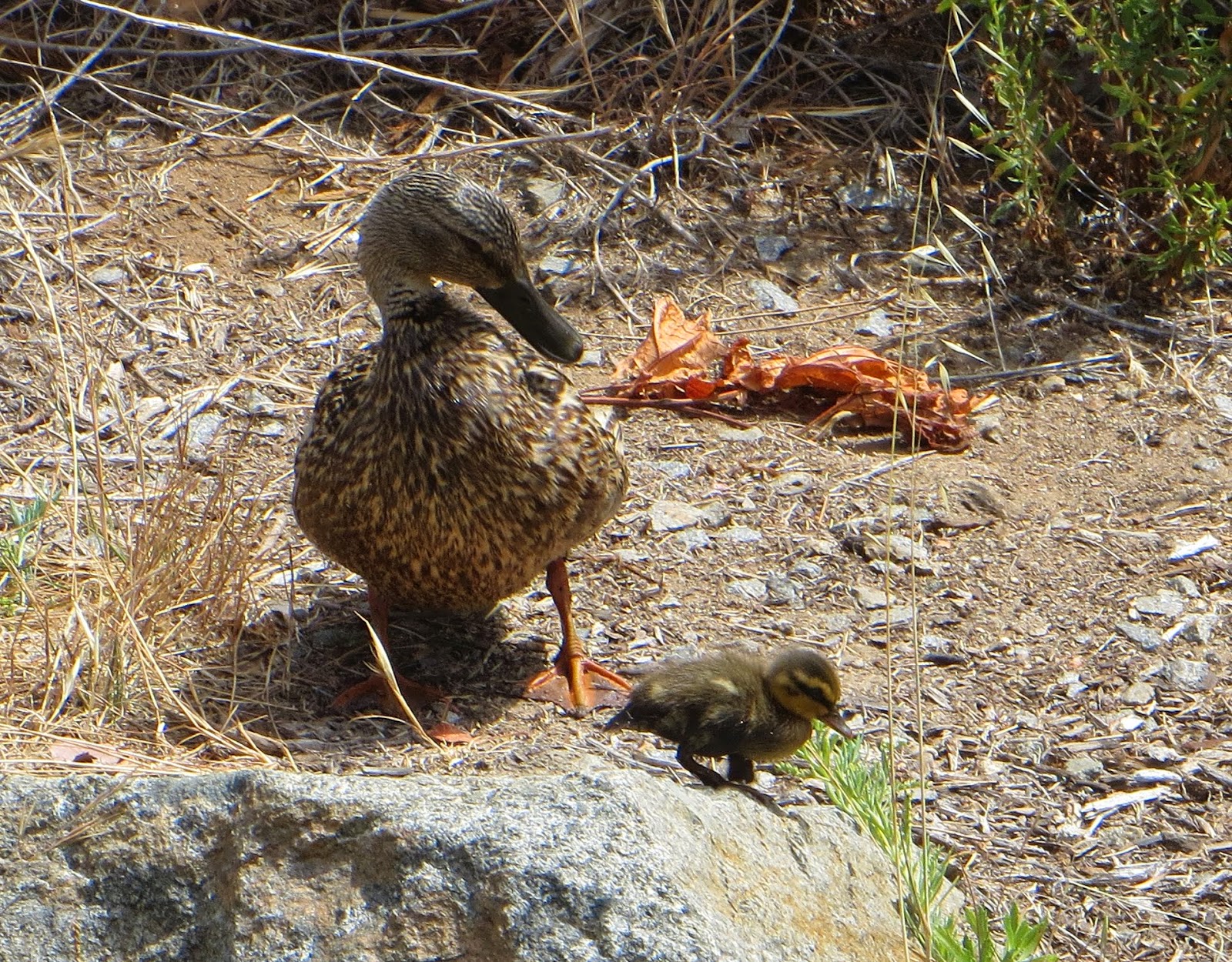 |
| Mallards |
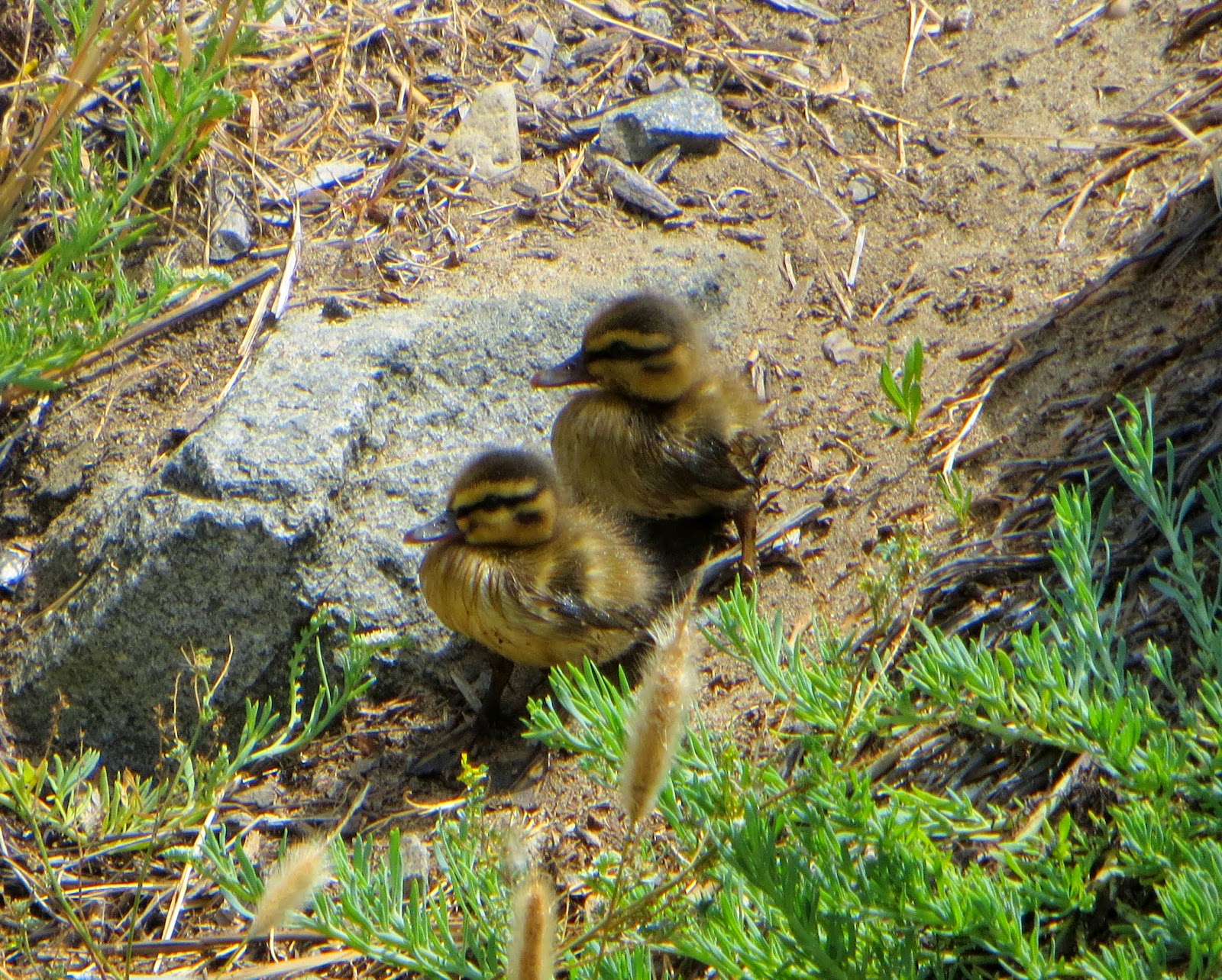 |
| Mallards |
No comments:
Post a Comment